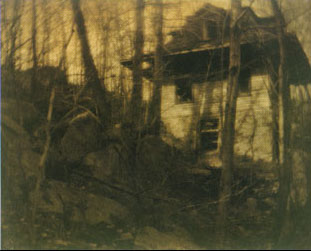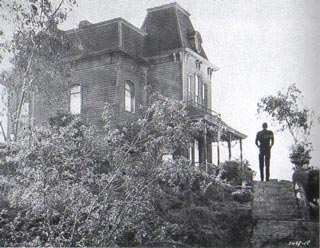|
|
|
|
|
Born
in Boston in 1882, Alvin Langdon Coburn was encouraged by photographer F. Holland
Day, his relative, to pursue photography. Coburn became most well known for
his Vortographs, which were the first known abstract photographs. The English
Vorticist movement in painting, which was related to the cubist movement, largely
inspired his Vortographs. These photographs, which Coburn first showed in 1917,
were taken through a kaleidoscope type lens that broke the image into abstract
planes. Before Coburn began making his Vortographs, he mainly took pictorial
photographs, including The Haunted House from 1904. Viewing Coburn's
photograph, one can easily make a connection between his haunted house and Anthony
Perkin's house in Psycho. Both houses appear to be wooden with darker
wooden roofs. They are also both fairly rustic; trees and shrubs surround each.
Each house is situated on a hill. In addition to these obvious similarities,
the style of both images is similar. Both works are symbols; the house in each
picture is a symbol. They pictorially represent the idea of a haunted house.
With their wooden frames, locations atop hills, and apparently weak foundations,
these houses epitomize haunted houses. Hitchcock borrowed this symbolism from
Coburn's composition. He also borrowed the paranoiac sensation that The Haunted
House induces in the viewer. Coburn's house personified; it has two eyes
(windows,) a nose, and a mouth (the door), and seems to stare back at the viewer.
In Psycho, Hitchcock recreated this by placing the Mother in the window
of the house. The mother serves the same purpose as the face of Coburn's house. |













